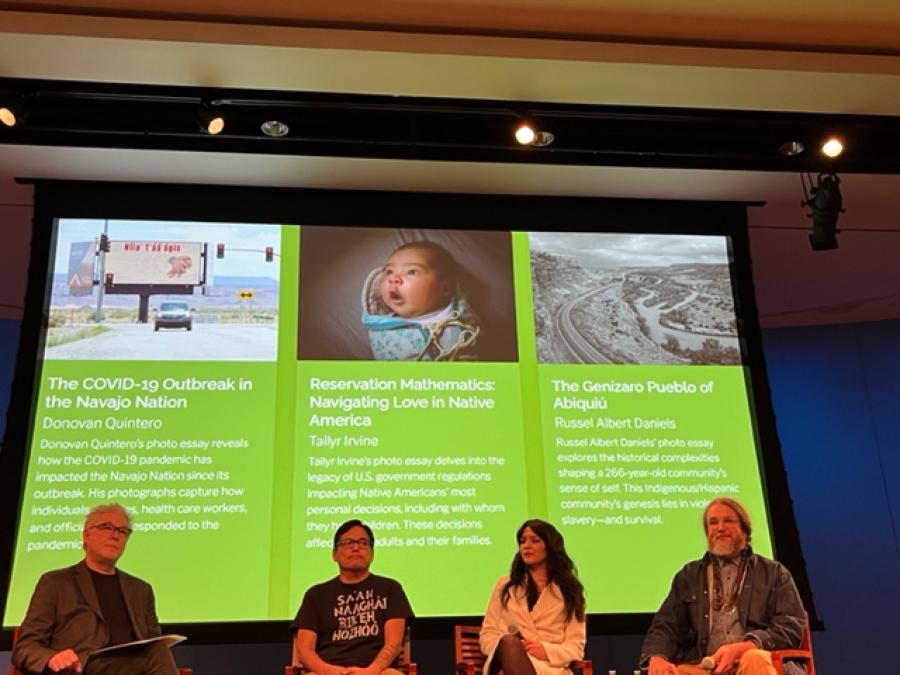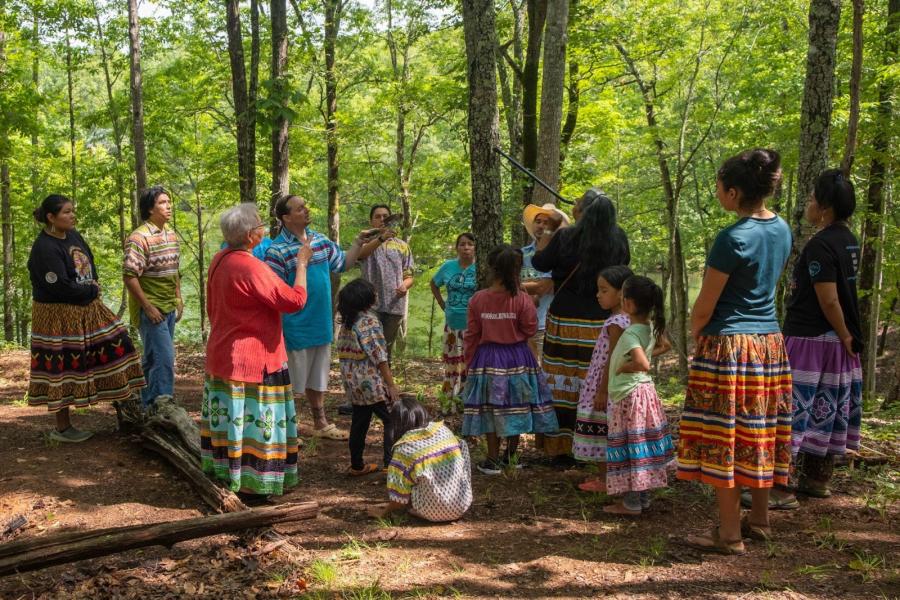
El Festival de las Artes y la Cultura del Pacífico, conocido familiarmente como FestPAC, es la mayor celebración de los Indígenas de las islas del Pacífico en todo el mundo. Este año se celebró la 13ª edición del Festival de las Artes y la Cultura del Pacífico, que tuvo lugar en Hawái del 6 al 16 de junio de 2024, en la isla de Oahu. Comenzó el 5 de junio con la bienvenida a un selecto grupo de representantes de cada delegación que navegaron en canoas tradicionales desde la base militar de Mōkapu hasta las orillas de la aldea Waʻa (canoa) de Hakipuʻu Kualoa, el lugar de nacimiento de nuestra (vieja) canoa de viaje kupuna, Hōkūleʻa. Allí fueron recibidos con los protocolos de saludo tradicionales de los visitantes que llegan a nuestras costas. El FestPAC comenzó en 1972 y se ha celebrado cada año, (con una pausa más larga debido a la pandemia) en todo el Pacífico y está planeado y patrocinado por la nación anfitriona. El tema de este año era Hoʻoulu Lāhui: Regenerando Oceanía, honrando las tradiciones con la vista puesta en el futuro.
A pesar de ser elogiado como el principal escaparate de las artes y las culturas de todo el Pacífico, un tema subyacente que emanaba de las naciones participantes fue la sucesión a través de la educación de la próxima generación. Al igual que en muchas tradiciones Indígenas vistas desde fuera, pero puestas en práctica desde una cosmovisión Indígena, el tema de la educación Indígena quedó en evidencia en la abundante participación multigeneracional, en la enseñanza de los ancianos a los jóvenes y en la asunción por parte de éstos de las kuleana (responsabilidades) que les asignan sus ancianos. La forma en que los jóvenes aceptan y ejecutan estas kuleana es un paso vital en su educación y preparación para llevar adelante las tradiciones de sus pueblos. En Hawaiʻi, tenemos un ʻŌlelo Noʻeau (dicho sabio), “Ma ka hana ka ʻike”, que se traduce como “haciendo, se obtiene conocimiento”. Sólo cuando uno pone manos a la obra en la tierra, conocerá verdaderamente y con todos sus sentidos, las complejidades de la tarea asumida y la plenitud del fruto que llega a dar.
La tripulación de Hawai'i y Aotearoa/Nueva Zelanda navega en la canoa de viaje de aguas profundas de la isla Hawai'i, Makali'i, hasta Mōkapu para recoger a los delegados de Samoa, Kiribati, Niue y las islas Marshal y llevarlos a Hakipu' u- Kualoa que se unirán a más de una docena de canoas y delegados para participar en los tradicionales protocolos de bienvenida a nuestra isla. hogar.
A diferencia de otras metodologías modernas, nuestras enseñanzas no son teóricas, sino que siguen un enfoque de maestro-aprendiz, un complicado enfoque holístico que incluye la tarea en cuestión y elementos de historia, costumbre, espiritualidad y mucho más. Un ejemplo de ello es cuando mi Kumu Hula (maestro de danza tradicional) nos enseñó un hula específico para un viaje a Aotearoa/Nueva Zelanda hace un par de décadas. Le ofrecí grabar la danza en vídeo para que los estudiantes de otras islas pudieran aprenderla. Él respondió: “Kaimana, el vídeo no puede ser el maestro, el vídeo no tiene hā (aliento de vida). Puedes grabar la danza para practicar, pero antes de compartir la grabación con otros, tienes que enseñarla en persona para que la vida de la danza continúe a través del hā que compartes”. Ese fue un momento intergeneracional de maestro a alumno que moldeó mi forma de pensar y de hacer de muchas maneras en los años venideros, y me siento agradecido y humilde al ver muchos ejemplos de esa transferencia intergeneracional de ʻike a lo largo del Festival de las Artes y la Cultura del Pacífico.
En la canoa Makaliʻi (isla de Hawai) navegando en alta mar, fuimos testigos de un momento de orgullo cuando un antiguo viajero pudo traer a su hijo adolescente como nuevo miembro de la tripulación. Cuando no está de viaje, este veterano tripulante es profesor de escuela y está muy versado en plantar, cultivar y cocinar alimentos tradicionales con sus alumnos. De hecho, parte de la comida que cultivan en su escuela se conserva y sirve para alimentar a quienes van en la canoa en sus numerosos viajes. Durante esta corta etapa del viaje, fuimos testigos del creciente vínculo entre padre e hijo, y del lawe hānai (cuidar a otros hijos de los miembros de la tripulación como si fueran nuestros). Todo culminó cuando padre e hijo prepararon juntos las comidas para la tripulación y el hijo asumió una mayor responsabilidad, permitiendo a su padre cierto respiro.
Miembros jóvenes y adultos del pueblo Pinuyumayan de la comunidad Kasavakan de Taiwán compartieron su viaje a través de la música y la danza a bordo de la canoa Moʻokiha o Piʻilani de la isla de Maui. En este intercambio en el agua, aprendieron sobre las tradiciones de viaje y cómo el conocimiento también se mantiene en canciones y danzas en Hawai de una manera similar a su proyecto Apuy (pedir fuego). Los adultos compartieron con los jóvenes las similitudes de nuestras lenguas nativas, las tradiciones de su Palakuwan y nuestro Hale Mua, que son las casas de nuestros hombres donde tienen lugar el aprendizaje y los ritos intergeneracionales. En las aguas de la bahía, un padre guiaba a su hijo de nueve años en el manejo de su canoa costera de doble casco en las aguas de una isla y una bahía desconocida. Sus enseñanzas culminaron cuando se bajó de la canoa y cedió el liderazgo a su joven hijo para que dirigiera y llevara a los participantes a navegar.
En el intercambio de danza, los delegados indígenas de Taiwán enseñaron a los participantes del FestPac una danza tradicional de movimiento de cabello.
La canoa tahitiana Faafaite navegó de Tahití a Hawái para participar en el FestPac. Aunque la tripulación abarcaba varias generaciones, desde jóvenes hasta ancianos, un elemento que hizo que este viaje fuera especial para ellos fue que su capitán y su navegante eran jóvenes y nuevos miembros de la tripulación cuando Faafaite visitó por primera vez aguas hawaianas en 2012 como parte del viaje Te Mana o Te Moana. Ahora son los líderes y están formando a la próxima generación para que ocupe su lugar. En una pāʻina (reunión) nocturna, compartieron sus historias y relataron sus viajes de aprendizaje, y cuando abandonaron nuestras islas, se llevaron con ellos a algunos de nuestros jóvenes líderes para que aprendieran junto a ellos en su viaje de vuelta a casa. Ya en tierra, en la aldea waʻa, tuvimos el privilegio de ver a hábiles tejedores de muchas naciones del Pacífico trabajar juntos para tejer una vela y, al mismo tiempo, invitar y entusiasmar a manos jóvenes a unirse, aprender y hacer el trabajo junto a ellos.
Delegados de Rapanui enseñan sus canciones y bailes a los participantes en un día de intercambio cultural.
On land at the waʻa village, we had the privilege of watching skilled weavers from many nations of the Pacific work together to weave a Tal vez el mayor y más conmovedor ejemplo de las transiciones intergeneracionales y del paso de la antorcha fue la presencia en el festival de la canoa de vela de un solo casco Mauloa y de la canoa de doble casco Makaliʻi. Mauloa fue el punto culminante de la sala de exposiciones, saludando a todo el mundo al entrar. Makaliʻi formó parte de la flota que llevó a los delegados a las costas de Hakupuʻu-Kualoa. Su relación es de mayor a joven. Cuando nuestros dirigentes quisieron construir la canoa Makaliʻi, recibieron instrucciones de kālai (tallar) primero una canoa de vela tradicional de koa, siguiendo las costumbres y prácticas de antaño. Con el apoyo de la comunidad y de muchos ancianos y conocedores que guiaron las tradiciones, protocolos y costumbres, esta tarea se completó y los talladores recibieron el título de Kālai Waʻa, Talladores de Canoas. De este modo, pudieron construir makaliʻi para nuestra isla y obtuvieron permiso para ello. Este esfuerzo no se detuvo ahí, ya que construyeron otros waʻa como el Alingano Maisu, un regalo para nuestro profesor y maestro, papa Mau Piailug, y su pueblo.

Este festival encarna el sabio dicho “He Waʻa He Moku, He Moku He Waʻa” (nuestra canoa es nuestra isla, nuestra isla es nuestra canoa). Esto habla de la interconexión e interdependencia de la vida en la canoa y la vida en las islas. En nuestra canoa, todos tenemos un papel; no hay pasajeros. Nos centramos juntos en nuestro destino y hacemos lo que nos corresponde para hacer realidad la visión y llegar a tierra. Si podemos vivir en nuestra isla como vivimos en nuestras canoas, interdependientes unos de otros y trabajando juntos en beneficio del conjunto, prosperaremos como pueblo. Si como Estados y naciones vivimos así, prosperaremos. Si vivimos así como planeta, todos prosperaremos colectivamente como residentes, como familia, de la Isla Tierra.
Lee este artículo en hawaiano en tinyurl.com/ikekuuna.
Lea este artículo en hawaiano en tinyurl.com/ikekuuna.
Foto superior: Los delegados de Samoa, Kiribati, Niue y las Islas Marshal pasan de las grandes canoas de viaje a canoas de remo y son llevados a la costa para los protocolos de bienvenida.



